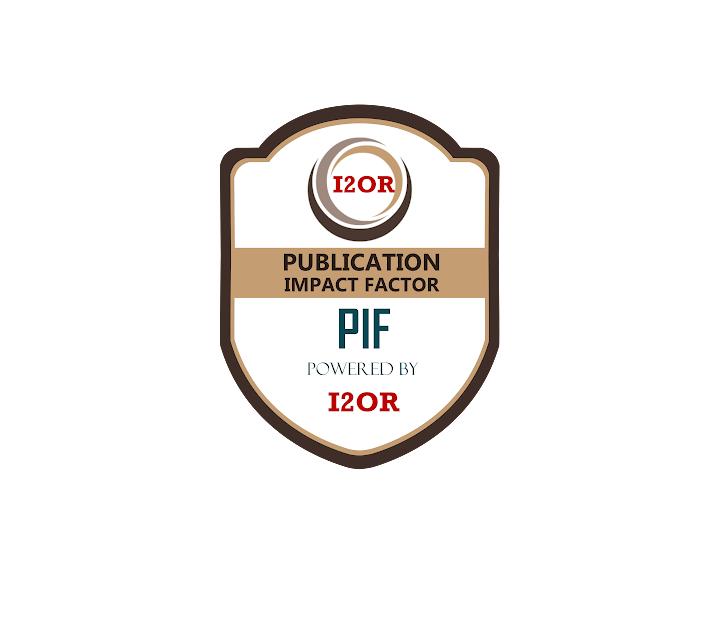VOLUME OF THE UPPER AIRWAY IN DIFFERENT FACIAL SKELETAL PATTERNS OF A POPULATION OF PALASTUDENTS FROM THE UNIVERSITY OF CUENCA USING CONE BEAM COMPUTED TOMOGRAPHY
DOI:
https://doi.org/10.47820/recisatec.v4i1.337Palavras-chave:
Cone beam computed tomography, CBCT, upper airway, pharyngeal airwayResumo
In the context of the diagnosis and treatment plan for patients with dentofacial deformities, it is crucial to examine the upper airway, since its function may be compromised by the facial skeletal pattern or impacted by the planned surgical intervention. Cone Beam Computed Tomography (CTCT) is positioned as the preferred option to evaluate it, thanks to its precision and ability to predict possible changes. Objective: to evaluate the volume of the upper airway in different facial skeletal patterns of a population of students from the University of Cuenca at TCHC. Materials and methods: 33 tomographies were evaluated through the Sidexis 4 program, where the volume of the nasopharynx, oropharynx and hypopharynx was measured according to facial skeletal pattern and sex. Results: Of the 33 CBCT analyzed, 10 (30%) belonged to the male sex and 23 (70%) to the female sex. Within the population of patients with skeletal class I, it was found that the volume of the oropharynx was greater compared to the nasopharynx and hypopharynx, thus obtaining an average of 21.87cm3, with a standard deviation of 5.09. Conclusions: The average volume of the upper airway in subjects with Class I facial skeletal patterns is higher than in Class II, thus being statistically significant in the oropharynx. It is recommended to conduct studies with a larger population involving class III skeletal patterns.
Downloads
Referências
Renzo Angel Paredes Vilchez, Jaime Alejandro Hidalgo Chavez.Volumen de la vía aérea superior en diferentes patrones esqueléticos faciales de una población peruana en tomografía computarizada de haz cónico. Lima: Rev. Estomatológica Herediana. abr./jun 2021;31(2) DOI: https://doi.org/10.20453/reh.v31i2.3970
Huamani H. Volumen de la vía orofaríngea según el biotipo facial en tomografías cone beam de pacientes que acudieron al Instituto de Diagnóstico Maxilofacial. Tesis para optar al Título Profesional de Cirujano Dentista. Lima: Universidad Nacional Mayor de San Marcos; 2016.
Claudino LV, Mattos CT, de Oliveira Ruellas AC, Sant’Anna EF. Pharyngeal airway characterization in adolescents related to facial skeletal pattern: a preliminary study. Am J Orthod Dentofacial Orthop. 2013;143(6):799- 809. DOI: https://doi.org/10.1016/j.ajodo.2013.01.015
Zheng Z, Yamaguchi T, Kurihara A, Li H, Maki K. Three-dimensional evaluation of upper airway in patients with different anteroposterior skeletal patterns. Orthod Craniofac Res. 2014;17(1):38-48. DOI: https://doi.org/10.1111/ocr.12029
Guijarro-Martínez R, Swennen GR. Three dimensional cone beam computed tomography definition of the anatomical subregions of the upper airway: a validation study. Int J Oral Maxillofac Surg. 2013;42:1140-9. DOI: https://doi.org/10.1016/j.ijom.2013.03.007
Guijarro-Martínez R, Swennen GR. Cone-beam computerized tomography imaging and analysis of the upper airway: a systematic review of the literature. Int J Oral Maxillofac Surg. 2011;40(11):1227-37. DOI: https://doi.org/10.1016/j.ijom.2011.06.017
Shokri A, Miresmaeili A, Ahmadi A, Amini P, FalahKooshki S. Comparison of pharyngeal airway volume in different skeletal facial patterns using cone beam computed tomography. J Clin Exp Dent. 2018;10(10):E1017-e28. DOI: https://doi.org/10.4317/jced.55033
El H, Palomo JM. Airway volume for different dentofacial skeletal patterns. Am J Orthod Dentofacial Orthop. 2011;139:511-21. DOI: https://doi.org/10.1016/j.ajodo.2011.02.015
Schendel SA, Jacobson R, Khalessi S. Airway growth and develop- ment: a computerized 3-dimensional analysis. J Oral Maxillofac Surg. 2012;70:2174-83. DOI: https://doi.org/10.1016/j.joms.2011.10.013
Castro-Silva L, Monnazzi MS, Spin-Neto R, et al. Cone-beam evaluation of pharyngeal airway space in class I, II, and III patients. Oral Surg Oral Med Oral Pathol Oral Radiol. 2015;120(6):679-83. DOI: https://doi.org/10.1016/j.oooo.2015.07.006
Dos Santos LF, Albright DA, Dutra V, Bhamidipalli SS, Stewart KT, Polido WD. Is there a correlation between airway volume and maximum constriction area location in different dentofacial deformities? J Oral Maxillofac Surg. 2020;78(8):1415.e1-1415.e10. DOI: https://doi.org/10.1016/j.joms.2020.03.024
Kikuchi Y. Three-dimensional relationship between pharyngeal airway and maxillo-facial morphology. Bull Tokyo Dent Coll. 2008;49(2):65-75. DOI: https://doi.org/10.2209/tdcpublication.49.65
Mohsenin V. Gender differences in the expression of sleep-disordered breathing: role of upper airway dimensions. Chest. 2001;120(5):1442-7 DOI: https://doi.org/10.1378/chest.120.5.1442
Iwasaki T, Hayasaki H, Takemoto Y, Kanomi R, Yamasaki Y. Oropharyngeal airway in children with Class III malocclusion evaluated by cone-beam computed tomography. Am J Orthod Dentofacial Orthop. 2009;136(3):318.e1-319. DOI: https://doi.org/10.1016/j.ajodo.2009.02.017
Hong JS, Oh KM, Kim BR, Kim YJ, Park YH. Threedimensional analysis of pharyngeal airway volume in adults with anterior position of the mandible. Am J Orthod Dentofacial Orthop. 2011;140(4): e161-e169. DOI: https://doi.org/10.1016/j.ajodo.2011.04.020
He J, Wang Y, Hu H, et al. Impact on the upper airway space of different types of orthognathic surgery for the correction of skeletal class III malocclusion: A systematic review and meta-analysis. Int J Surg. 2017;38:31-40. DOI: https://doi.org/10.1016/j.ijsu.2016.12.033
Wiedemeyer V, Berger M, Martini M, Kramer FJ, Heim N. Predictability of pharyngeal airway space dimension changes after orthognathic surgery in class II patients: A mathematical approach. J Craniomaxillofac Surg. 2019;47(10):1504-9. DOI: https://doi.org/10.1016/j.jcms.2019.07.024
Cheng-Hui C, Wang PF, Ray Han-Loh S, Lau HT, ShengPing S. Maxillomandibular Rotational Advancement: Airway, Aesthetics, and Angle’s Considerations. Sleep Med Clin. 2019;14(1):83-9. DOI: https://doi.org/10.1016/j.jsmc.2018.10.011
Faur CI, Roman RA, Bran S, et al. The Changes in Upper Airway Volume after Orthognathic Surgery Evaluated by Individual Segmentation on CBCT Images.Maedica.2019;14
Downloads
Publicado
Como Citar
Licença
Copyright (c) 2024 RECISATEC - REVISTA CIENTÍFICA SAÚDE E TECNOLOGIA - ISSN 2763-8405

Este trabalho está licenciado sob uma licença Creative Commons Attribution 4.0 International License.
Os direitos autorais dos artigos/resenhas/TCCs publicados pertecem à revista RECISATEC, e seguem o padrão Creative Commons (CC BY 4.0), permitindo a cópia ou reprodução, desde que cite a fonte e respeite os direitos dos autores e contenham menção aos mesmos nos créditos. Toda e qualquer obra publicada na revista, seu conteúdo é de responsabilidade dos autores, cabendo a RECISATEC apenas ser o veículo de divulgação, seguindo os padrões nacionais e internacionais de publicação.





















































